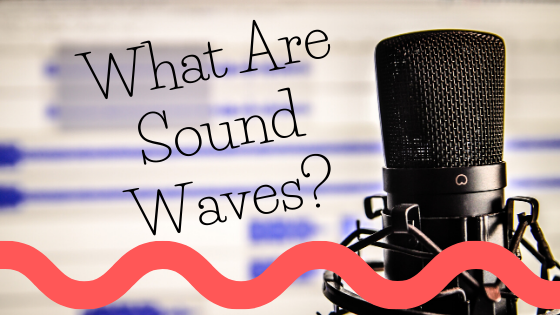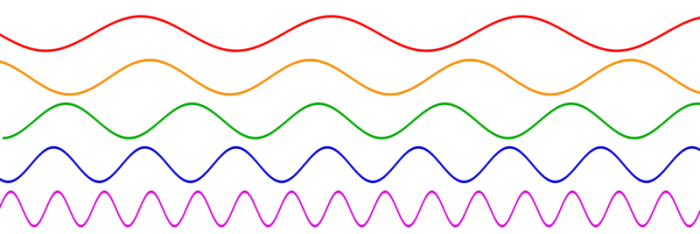
Sound energy is the energy released by the vibration of objects, and measured in a unit called joules. Sound is a wave, and it has oscillating compressions and displacement, being able to store both kinetic energy and potential energy.
That’s the quick definition of sound energy, but to better understand sound energy, it would be helpful to take a closer look at the structure of sound and how it interacts with objects, as well as how it stores and releases energy.
“Sound is the vocabulary of nature.” — Pierre Schaeffer
What Is Sound?
Let’s start off by defining sound. Sound can be thought of as simply the energy that objects create when they are vibrating. As an example, consider a drum that vibrates when hit. The drum pushes the air around the drum around and makes it vibrate in addition. The energy will move through the air, making it vibrate in every direction until the vibrations hit your ear, and this is what causes the perception of sound. While sound can be said to have two different aspects to it – a psychological aspect that is the perception and interpretation of sound within the ears and brain, and the physical process that creates sound energy – this article will deal mainly with the physical aspects of sound.
Sound is the travel of energy through the air and its arrival at the ear following this. You can think of the sound waves as similar to ocean waves, traveling in a specific direction and vibrating in a specific way. However, there is a difference between how ocean waves vibrate and soundwaves vibrate. While ocean waves vibrate up and down, sound waves do not vibrate in this way. Ocean waves are referred to as transverse waves because as the water moves up and down, the energy and the wave transverses forward.
In contrast, as soundwaves travel forward, the air in front of the soundwaves spreads out in some areas and is bunched together in other areas. This creates rarefactions and compressions, stretched out areas and bunched up areas respectively. So while ocean waves vibrant up and down and water, the soundwaves will either pull or push the air back and forth.
Sound Waves And Reflection
If you watch the way that ocean waves interact with a beachfront, you’ll notice that they do things like hit beach walls and are reflected back into the ocean. The waves can also spread up the beach until they run out of energy or spread out in ripples. This is a reflection of the way that energy behaves when transferred by ocean waves, and soundwaves can be thought of as reflecting in this matter as well.
Soundwaves can reflect off surfaces just the way that ocean waves bounce off of the seawall, or much like light reflects off the mirror. Echoes are just reflections of soundwaves, they are simply sound reflections. The sound energy that originates from a source bounces off of the surface and travels back in the direction of the source, entering your ears a second time. There is a delay between the origination of the sound and the echo that you hear, due to the fact that it takes more time for the sound of the echo to reflect off of the surface and travel back.
“Sound waves do not die out. They travel forever and forever. All our sentences are immortal. Our useless bleatings circle the universe for all eternity.” — Fay Weldon
As they travel, sound waves lose their energy. Aspects of the environment, such as wind and weather can affect how quickly the sound waves lose their energy and are overwhelmed by other sounds. This is why it is easier to hear sounds far away on calm days than on windy days, as the wind dissipates their energy quicker. Likewise, ocean waves also would dissipate in similar fashions. Waves of water are capable of traveling far into the ocean, yet they can also be interrupted by stormy weather.
Sound waves are similar to ocean waves and light waves in other aspects well. As ocean waves travel into a bay, they spread out and ripple in circles. Soundwaves have this property as well, which is why they can be heard around corners. For instance, if someone is playing a musical instrument around the corner, the soundwaves will travel out from the source point and spread out as they move, enabling them to be heard even though the soundwaves aren’t coming at you in a straight line. This property is called diffraction.
Measuring Sound Waves

Sounds have different frequencies. Waves on the bottom have higher frequencies than those on top. Photo: LucasVB via Wikimedia Commons, Public Domain
All sound waves have similar properties, acting in the same way. They travel through the environment by making molecules and atoms vibrate back and forth. However, soundwaves are different as well, having different pitches and cadences, being loud or quiet. What accounts for differences between sounds when the soundwaves are operating in the exact same way? The energy that soundwaves make when an object vibrates possesses a specific pattern, small or large. The amplitude or intensity of the sound refers to how loud a sound is, and a larger, more powerful sounds have higher amplitude.
While amplitude is one property of soundwaves, another property of soundwaves is their frequency or pitch. The frequency or pitch of a sound wave refers to the number of waves that a sound source creates in approximately one second. A violin is a higher-pitched instrument than a double bass instrument, so violins make higher-pitched sound/produce more waves second than base instruments.

Shows how pitch changes over time. Photo: By Rburtonresearch – Own work, CC BY-SA 4.0, https://commons.wikimedia.org/w/index.php?curid=45074869
So why is it that a piano and violin can produce soundwaves that have the exact same frequency and amplitude and yet sound different from one another? This is because the waves they produce are not identical, even if they are similar in frequency and amplitude. Any given instrument will make many different soundwaves at a given time. There is the main wave that has a certain pitch and amplitude to it, and this main wave is referred to as the fundamental. Over the fundamental, there are waves referred to as overtones and harmonics, which are made out of higher-pitched sounds with a frequency that is many times higher than the fundamental frequency.
Due to these facets of soundwaves, every instrument has its own unique combination of harmonics and frequencies referred to as a timbre. This means that even very similar instruments have their own unique sound profile. The amplitude of the waves produced by a certain instrument also shifts in unique ways over a period of time, higher-pitched noises frequently dissolve quicker and die off than lower tones.
The Speed Of Sound
As previously mentioned, sound carries energy and waves, and therefore the speed of sound refers to the speed at which the sound waves move. The speed of sound is the speed at which sound energy moves between two different points. The speed of sound isn’t actually a constant speed, rather it differs in different atmospheric conditions. Sound will travel at different speeds through gases, liquids, and solids, and even the speed it has through a specific type of material can change. However, in general, the speed of sound at sea level is around 1220 km an hour or 760 miles per hour.
The speed of sound is roughly correlated with the density of the medium it is traveling through, and it travels faster through solid and liquid materials than gas. Sound travels around 15 times faster through a section of steel than it does through the air, and it also travels through the water about four times faster than air. In terms of how sound travels through gases, the speed of sound depends on the type of gas and other factors like temperature. The chemical makeup of the gas influences the speed at which the sound travels, for instance, sound travels around three times quicker in helium gas than in the regular air found in the atmosphere. Sound also travels quicker in the warmer air that is close to the ground than in the colder air which is higher up.
“Since light travels faster than sound, some people appear to be bright until you hear them speak.” — Brian Williams
So what is the sound barrier? When a jet airplane is said to break the sound barrier, it accelerates to a speed that it is able to move faster than the high-intensity sound waves that are coming from its own engines. As the sound waves compress together, they overlap and produce a barrier that rapidly expands as the jet plane passes through them, creating a powerful, loud sonic boom. The fact that the jets are moving faster than the speed of sound is the reason that fighter planes can fly by a second or two before their jet engines are heard.
How Different Musical Instruments Work

Photo: Pexels via Pixabay, CC0
When it comes to music, different musical instruments produce sound in different ways. Instruments like drums, pianos, and xylophones are known as percussive instruments. These percussive instruments operate through striking an object with a hammer or similar tool, making the object vibrate. The drumhead or piano wire vibrates in its own unique way, creating the sound waves that travel through the air.
Meanwhile, wind instruments and brass instruments function by making an air column resonate, causing the air to vibrate back and forth. The valves and holes on the instrument control the intensity of the residence, altering the pitch of the instrument.
Electrical or synthetic instruments operate by creating electrical vibrations. The circuits within the instrument create different waveforms that either mimic the sounds of traditional instruments or create new sounds altogether.









